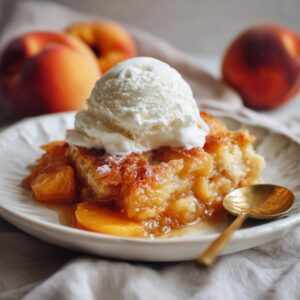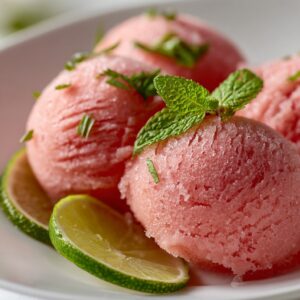Alright, Let’s Talk Caprese Pasta Salad
So picture this: It’s blazing hot, I’m already sweating after just looking at the stove, and I need something that’s not just another sad salad. That’s when this Caprese Pasta Salad with Balsamic Glaze comes to the rescue! I first whipped this up for a family picnic (mainly because I wanted an excuse to eat mozzarella balls straight from the fridge). And, you know what? Everyone actually ate vegetables with excitement for once. Also, I may have dropped a tomato on the floor and the dog got it—so there’s that. Anyway, let’s get into it before I ramble about my dog’s tomato obsession.
Why You’ll Probably Love This (Or At Least Not Hate It)
I make this when I want to pretend I’m effortlessly cool and Mediterranean. But also because it takes, like, twenty minutes if you don’t count the staring-into-space step. My family devours it (even the picky one who normally picks basil off everything—I just don’t tell her what’s in it). Plus, if you’re distracted and forget it on the counter, it honestly still tastes good. Once, I even forgot the balsamic drizzle until the very end and, actually, it kinda improved things? Go figure.
What You’ll Need (Plus My Little Substitutions)
- 250g pasta (fusilli or farfalle, but I’ve even used spaghetti broken up—don’t tell my Italian friend Paolo)
- 200g cherry tomatoes, halved (or quartered if you’re feeling fancy or avoiding big bites)
- 200g fresh mozzarella balls (bocconcini—those tiny ones—or just tear up a big ball, honestly)
- A big handful of fresh basil (or, I know, dried is not ideal, but in winter I’ve used it—just use less!)
- 3 tbsp olive oil (my grandmother swears by Bertolli, but supermarket stuff works, too)
- Salt and cracked black pepper, to taste
- Balsamic glaze, for drizzling—store-bought is fine (I sometimes reduce balsamic vinegar with a spoon of honey if I’m out, which is, let’s be honest, often)
How I Throw This Together (Directions-ish)
- First, cook your pasta. Bring a big pot of salted water to a rolling boil (like, the kind that could power a small train). Chuck in your pasta and cook till al dente—check the box but start tasting a minute before the timer. (This is where I usually sneak a taste and always burn my tongue, oops.)
- Drain the pasta, run it under cold water for a sec, and toss it in a big bowl. If it’s a bit sticky, drizzle a splash of olive oil and give it a quick stir. Don’t worry if it clumps, the dressing will loosen it.
- Add your tomatoes, mozzarella, and basil. Rip the basil right over the bowl—don’t bother being neat. Actually, those rustic pieces look nicer, I think. Season with salt and pepper. Drizzle olive oil, and give it all a gentle mix. If it looks a bit messy, trust me, it’ll taste good.
- Chill in the fridge if you have time (but who does?)—or serve right away. Just before serving, drizzle with balsamic glaze. And here’s my real secret: I always add a bit more than I think I should. The sweet tang is, well, chef’s kiss.
Stuff I’ve Learned (The Hard Way)
- If you use the big mozzarella balls, tear them up by hand. Chopping kind of smooshes them, and they go weirdly squeaky (not a technical term, but you’ll see what I mean).
- Don’t add the glaze too early or it gets kind of gloopy. Trust me—it happened at my cousin’s birthday and I ended up scraping balsamic puddles off the bottom.
- Actually, I find this tastes better the next day, though the basil can get a bit sad-looking. Maybe toss in fresh leaves before serving?
Experiments and Oddball Variations
So, I’ve tried swapping in arugula for basil (surprisingly peppery and great, but don’t overdo it). Once I used sun-dried tomatoes instead of fresh—less juicy, more tang, but still good if you’re out of the real thing. Oh, and one time I used gluten-free pasta; it sort of fell apart, but maybe that was my cooking?!
What If You Don’t Have the Right Gear?
You don’t really need any fancy kit. I use a big mixing bowl and a regular wooden spoon. But if you, say, don’t have a colander, I’ve drained pasta with a slotted spoon before—awkward, but it gets the job done. And yes, you can eyeball measurements. Who’s watching?

How To Store (If You Somehow Have Leftovers)
Pop leftovers in an airtight container in the fridge. It’s probably fine for two days, maybe three if you trust your fridge. Though, honestly, in my house it never lasts more than a day! The flavors meld a bit, but the basil wilts, so I just throw in a couple fresh leaves before serving again. Here’s a good trick for keeping basil perky.
How We Like to Serve It Around Here
I love this as a main when it’s too hot to cook, but it’s also the best side for grilled chicken or fish. Sometimes (when I want to feel extra posh) I’ll pile it on a platter and scatter a few more basil leaves on top—makes me look like I’ve got it together. My kids eat it straight form the bowl, standing at the counter. No judgment.
A Couple Things I Learned the Hard Way (Pro Tips, Sort Of)
- Don’t rush cooling the pasta; once I skipped this and ended up with melted mozzarella blobs. Not a disaster, but not what you want either.
- I sometimes try to “wing it” with the balsamic, and honestly, using a squeeze bottle gives you those nice stripes; a spoon just makes puddles. But if all you’ve got is a spoon? Go for it! It’s all flavor in the end.
Some Questions I’ve Actually Been Asked (FAQ)
- Can I make this ahead? Yep! It’s great the next day. Actually, I think the flavors get a bit cozier overnight.
- Do I really need balsamic glaze? You could skip it, but it’s sort of the star. Or you can make your own—this method is dead simple. Or just use a drizzle of regular balsamic—no one will chase you down.
- What pasta works best? I like short shapes—fusilli, penne, farfalle. But, in a pinch, I’ve totally broken up spaghetti and no one noticed.
- Is this good for potlucks? Oh, yes. Just keep the glaze separate till you serve, or you end up with slightly purple pasta. Learned that the hard way at a church picnic!
- Can I add extras? Absolutely, toss in grilled chicken, roasted veggies, or even olives. (My aunt puts in capers but, honestly, I pick them out.)
So, that’s my Caprese Pasta Salad with Balsamic Glaze—easy, forgiving, and just a little bit fancy if you want it to be. If you try it, let me know how you wing it, or how your dog gets the first bite. Here’s where I got some of my original inspiration, by the way.
Ingredients
- 8 oz (225 g) short pasta (such as rotini or penne)
- 1 cup cherry tomatoes, halved
- 1 cup fresh mozzarella balls (bocconcini), halved
- 1/4 cup fresh basil leaves, torn
- 2 tbsp extra-virgin olive oil
- 1 tbsp balsamic glaze
- Salt and black pepper to taste
- Optional: 1 clove garlic, minced
Instructions
-
1Bring a large pot of salted water to a boil. Cook the pasta according to package instructions until al dente. Drain and rinse under cold water to cool.
-
2In a large bowl, combine the cooked pasta, cherry tomatoes, mozzarella balls, and fresh basil.
-
3Drizzle the olive oil over the salad. Add salt, black pepper, and minced garlic if using. Toss gently to combine.
-
4Transfer the salad to a serving platter or bowl. Drizzle with balsamic glaze just before serving.
-
5Serve immediately or refrigerate for up to 2 hours. Garnish with extra basil if desired.
Approximate Information for One Serving
Nutrition Disclaimers
Number of total servings shown is approximate. Actual number of servings will depend on your preferred portion sizes.
Nutritional values shown are general guidelines and reflect information for 1 serving using the ingredients listed, not including any optional ingredients. Actual macros may vary slightly depending on specific brands and types of ingredients used.
To determine the weight of one serving, prepare the recipe as instructed. Weigh the finished recipe, then divide the weight of the finished recipe (not including the weight of the container the food is in) by the desired number of servings. Result will be the weight of one serving.
Did you make this recipe?
Please consider Pinning it!!





